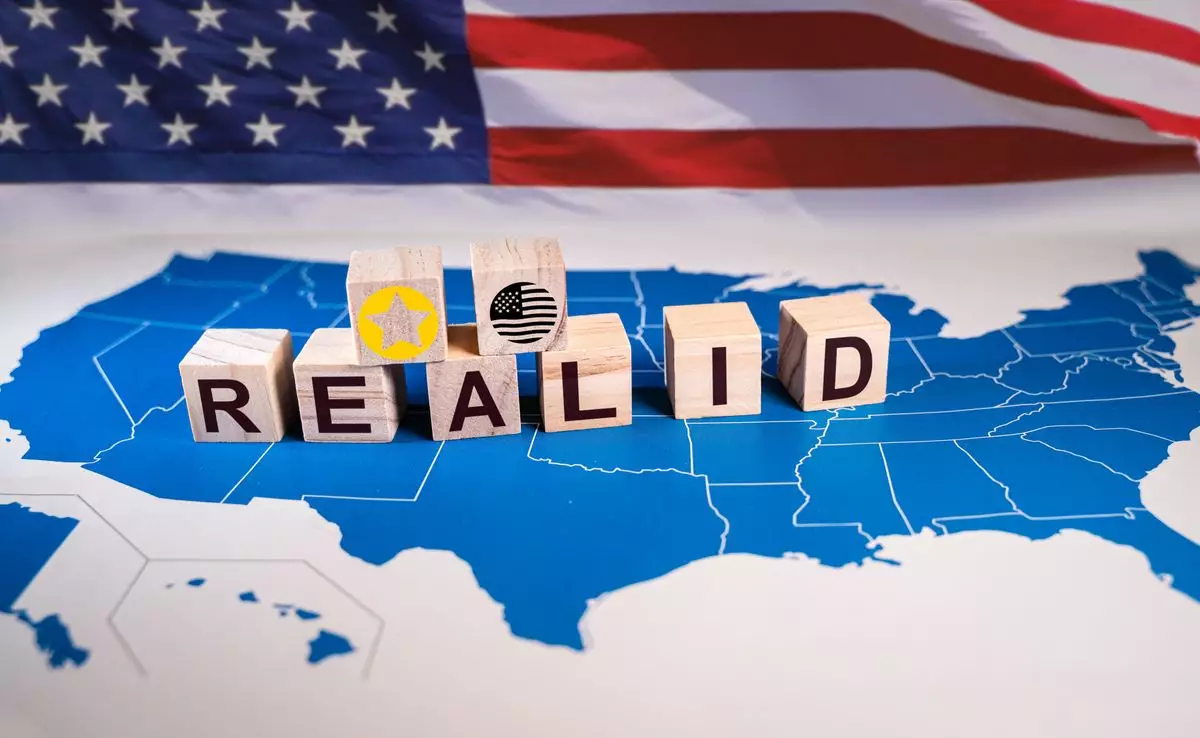With the recent implementation of the Real ID requirement across the United States, air travel is entering a new phase that promises enhanced security but also presents potential challenges for travelers. As of Wednesday, the Transportation Security Administration (TSA) began enforcing this policy, which mandates that all travelers present a federally accepted identification to board domestic flights. Although the transition was relatively smooth for many airports, it has incited various reactions from travelers, highlighting an inevitable mix of relief and frustration.
The Real ID initiative, shaped by recommendations from the 9/11 Commission, aims not only to improve identification protocols at security checkpoints but also to bolster national security. However, the rollout has been anything but straightforward, teasing anxieties around what some see as unnecessary bureaucratic hurdles. While an overwhelming 81% of Americans are estimated to already possess compliant IDs, the remaining percentage is generating lengthy lines at Department of Motor Vehicle (DMV) offices and an air of uncertainty among travelers.
Unexpected Smooth Sailing at Airports
Despite the looming deadline for Real ID compliance, most airports reported a remarkable operational flow on Wednesday. Airports like LaGuardia and Philadelphia showcased minimal wait times at security checkpoints, owing in part to proactive measures by TSA agents. In Philadelphia, agents were stationed to pre-check IDs, handing flyers to those unable to comply. These flyers indicated the requirements ahead, including QR codes that linked to lists of accepted identifications. However, the situation was not entirely devoid of complications—many assert the last-minute rush and vague requirements added unnecessary pressure for travelers.
The waiting game at DMVs in the days leading up to the enforcement saw unwarranted frustration among citizens. Long lines and enhanced scrutiny have sparked a common retort: is the quest for security merely a time-consuming inconvenience? Travel enthusiasts like Marion Henderson were proactive enough to obtain their Real IDs ahead of time, while others, like Michael Aceto, had to spend hours in line—an experience he deemed a “big waste of time.”
Navigating Through Confusion and Frustration
Social media platforms like Reddit and Facebook lit up in the weeks prior to the Real ID deadline. Users were not just sharing their concerns but also seeking advice about whether they could still board their flights without a compliant ID. This collective anxiety underscores the gaps in communication from authorities regarding the new rules. However, the TSA has stated that travelers without Real IDs will still be allowed to fly after additional screenings, but how effective this strategy will be is still up for debate.
Homeland Security Secretary Kristi Noem addressed the concerns, assuring travelers that they could fly if they could pass security checks. Still, those without proper identification face a likely discouragement of additional screening procedures, leaving many to wonder if their travel plans might be disrupted at the very last minute.
Many have echoed similar sentiments—after enduring long wait times at DMVs and grappling with funding issues that have long plagued state departments, the last-minute scramble can feel counterproductive. It raises the question: should the emphasis on enhanced security compromise the traveler’s experience?
Implications for Future Travel Plans
While the initial stresses may seem daunting, there is a silver lining—state offices have been adapting, extending hours and ramping up staff to handle the influx of Real ID applications. This scramble, however, may lead some to question the timing of such a mandatory requirement. According to comments from aviation officials, those with flexible timelines should consider waiting to obtain their Real IDs, thereby alleviating the current congestion at DMV offices.
Officials also emphasized that travelers holding passports or tribal identification already meet the identification standards. As the initial learning curve settles, there’s potential to streamline processes in the long run, but immediate actions are required to ensure that travelers aren’t forced to navigate excessive delays.
In responding to this challenge, stakeholders must now pivot towards fostering an understanding of the Real ID initiative, emphasizing convenience while also addressing security needs. The underlying quest for a balance between rigorous security mandates and an enjoyable travel experience remains ever-pressing.
The implementation of the Real ID is a testament to a changing landscape in air travel—one that requires both travelers and authorities to adapt, ensuring a seamless journey while keeping safety paramount. In the broader context, it serves as an essential reminder of how public policy can directly impact personal experience, marking a pivotal moment in our collective approach to modern travel.


Leave a Reply